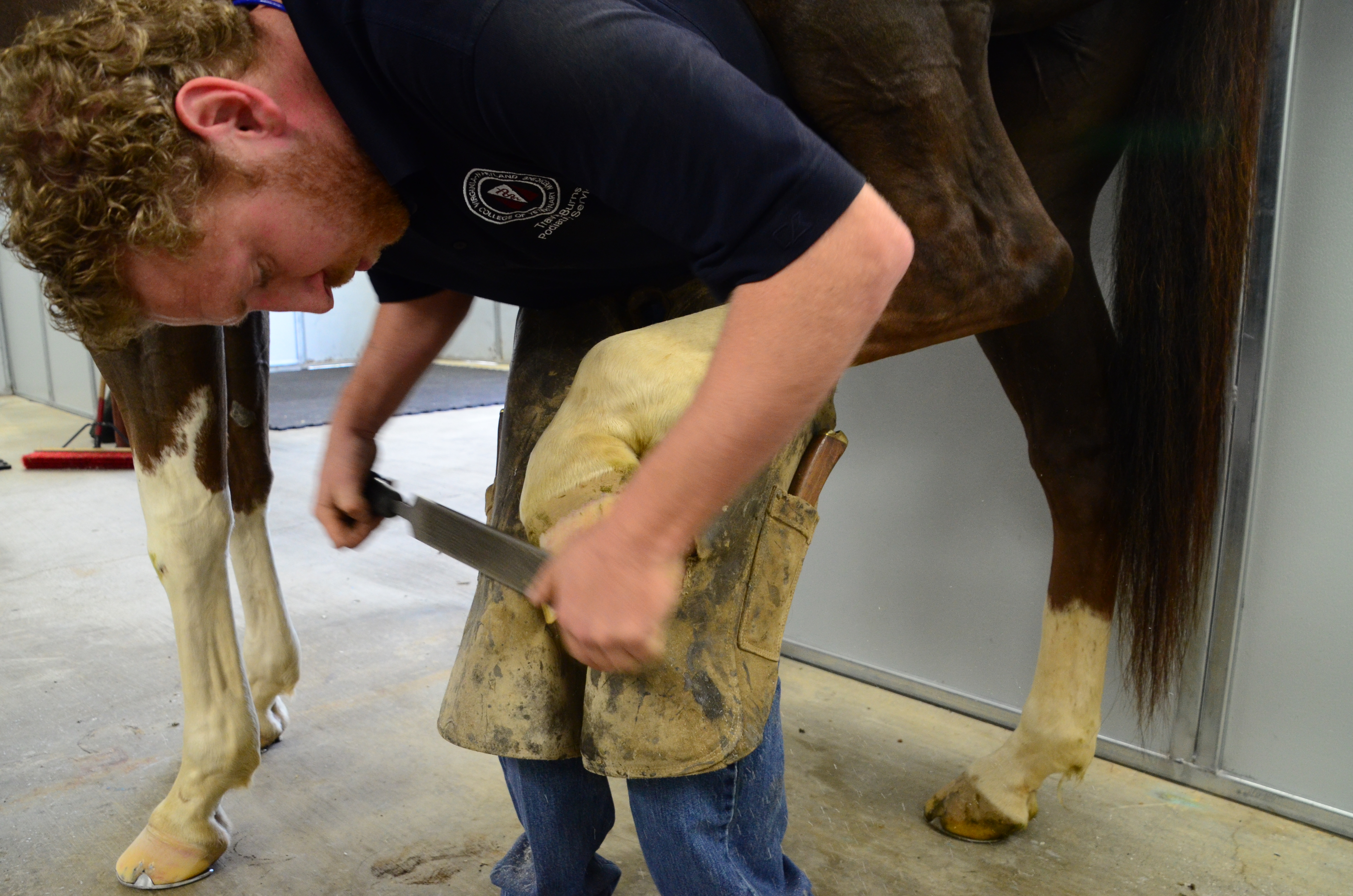Pictured Above: Travis Burns, assistant professor of practice and chief of farrier services at the Virginia-Maryland Regional College of Veterinary Medicine, was awarded the American Farrier’s Association’s inaugural research grant.
The American Farrier’s Association (AFA) has awarded its inaugural research grant to Travis Burns, assistant professor of practice and chief of farrier services at the Virginia-Maryland Regional College of Veterinary Medicine at Virginia Tech University.
The research funds awarded through the grant are allowing Burns and his team to make strides in knowledge pertaining to the equine industry and the farrier profession.
“We are working as a team to determine the mechanical properties of commonly used composites that are used to repair and stabilize hoof wall fractures — complete full thickness hoof wall cracks,” says Burns, who was awarded the grant before he was elected AFA president.
Burns’ research involves testing the strength and properties of various patches that can be used for quarter crack repair so horses have the opportunity to return back to work in a hurry, if need be.
The work is part of a larger research project out of the Virginia-Maryland Regional College of Veterinary Medicine.
Burns elaborates on the importance of such research and the value of the AFA’s support through the awarded grant.
“As a profession, we need to add to the scientific field by conducting experiments regarding what we do, so we can make evidence-based decisions on specific techniques, products, effects of shoe modifications, etc.,” says Burns. However, it is difficult to gain funding for farrier led research, especially for the small projects/basal projects that need to be completed.”
Katelyn Panos, a member of the AFA Research Committee, adds that grants such as these are important because they help farriers to gain respect in a way that bypasses licensing, which has been a subject of much contention in the community. She believes that it would serve the industry well to produce peer-reviewed research and read and talk about veterinary research with peers and veterinarians.
Panos says that she finds it frustrating when a client asks her a basic farriery question and she has no scientific fact to back up what she is doing.
“Almost nothing about what we do has been through a peer-reviewed process, so essentially we have never developed recognized fact,” says Panos. “Now is a great time to do so. We don’t all need a degree to do this. The AFA is now providing the tools farriers need to get started.”
Applying For Next Year’s Grant
Application for the research grant comprises of a two-step process. For the 2019 cycle grants, the first step is due Oct. 10. It includes the submission of a résumé, cover letter, specific aims page and a list of references.
The research committee then provides feedback on each application and assigns each farrier with an academic mentor, if they have not already specified a preference in the cover letter.
Applicants will receive mentor assignments and feedback Nov. 2.
Learn More
Bringing The Hoof To Scientific Research
Groups Aim To Boost Hoof-Care Research
Farriers Research Each Day, Why Not Document It?
The farrier-mentor teams then collaborate and submit a more formal grant application, as part of the second step.
The formal application includes revised elements from the first step, as well as budget, responsibilities, animal welfare outline, plans to share research, etc.
The second step is due Jan. 4, 2019, and reviewer scores are returned Jan. 25 after being assessed by two academics who have knowledge in the field of study, and by a farrier to maintain hoof perspective.
Awards will be given to the two highest-scoring grants.
When completed, awardees must publish their work in an academic journal, as well as in laymen’s terms in a farrier publication, such as the American Farriers Journal.
Email americanfarriersresearch@gmail.com for more information and instructions.









Post a comment
Report Abusive Comment